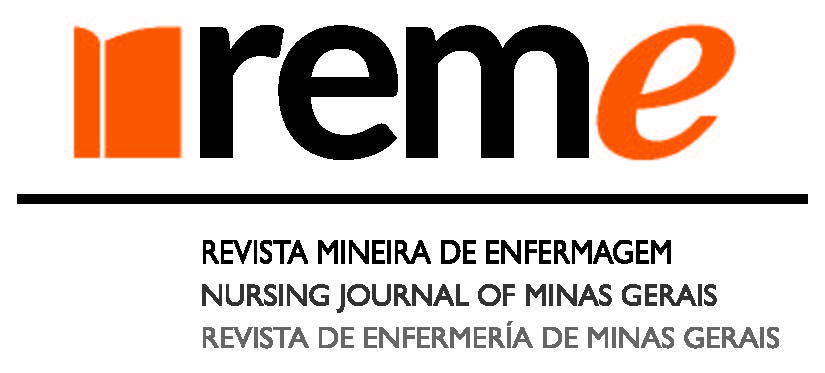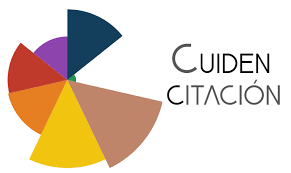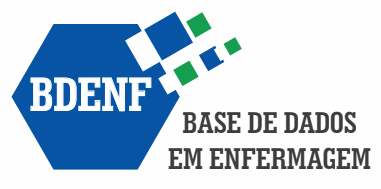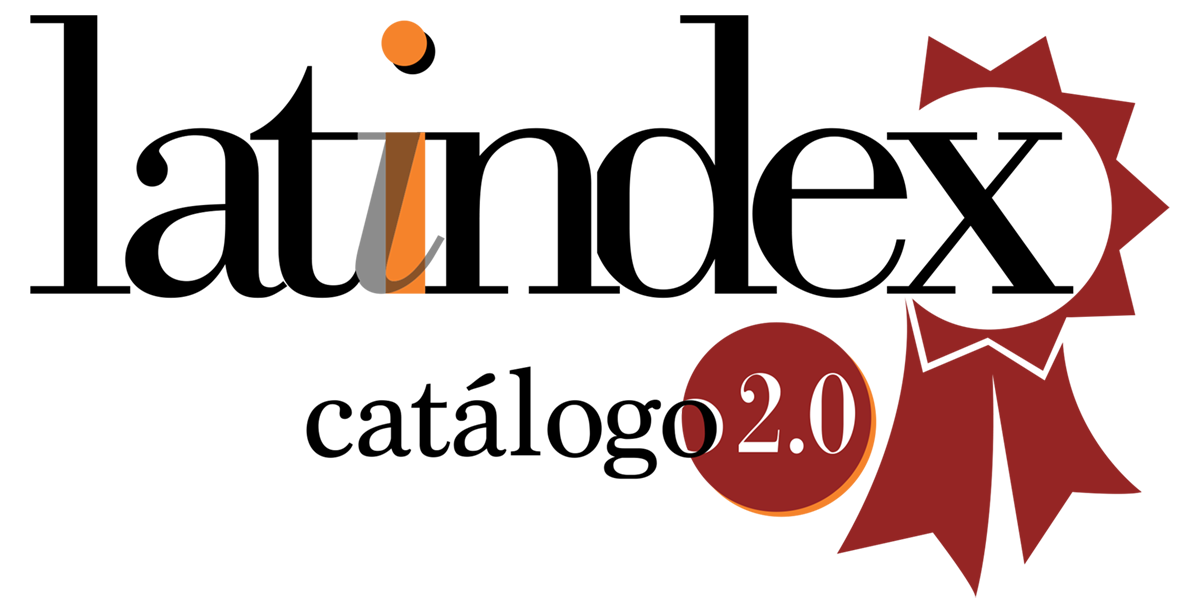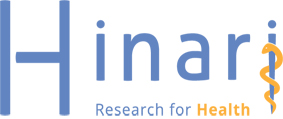Fatores de risco e proteção para as doenças crônicas não transmissíveis entre escolares brasileiros
pesquisa Nacional de Saúde do Escolar 2015 e 2019
DOI:
https://doi.org/10.35699/2316-9389.2022.38620Palavras-chave:
Adolescentes, Doença Crônica, Fatores de Risco, Fatores de ProteçãoResumo
Objetivo: descrever as prevalências de fatores de risco e de proteção para as doenças crônicas não transmissíveis (DCNT) em adolescentes brasileiros em 2019 e compará-las às de 2015. Método: estudo transversal com dados da Pesquisa Nacional de Saúde do Escolar. Estimou-se as prevalências e intervalos de confiança de 95% (IC95%) dos indicadores de alimentação, atividade física e uso de drogas, segundo sexo, instituição de ensino e Unidade da Federação. Resultados: em 2019, o consumo de frutas foi 26,9% (IC95% 26,3-27,6), de verduras e legumes 28,8% (IC95% 28,2-29,4), de ultraprocessados 97,3% (IC95% 97,1-97,6) e de guloseimas 32,8% (IC95% 32,1-33,4). Apenas 28,3% (IC95% 27,4-28,8) praticaram atividade física. O fumo entre os adolescentes totalizou 6,8% (IC95% 6,3-7,3) e o consumo de álcool 28,1% (IC95% 27,3-28,8). Ao comparar 2015 com 2019, observou uma redução do consumo de frutas (2015: 30,9% - IC95% 29,6-32,3; 2019: 26,9% - IC95% 26,3-27,6), refrigerante (2015: 27,2% - IC95% 25,6-28,9; 2019: 17,2% - IC95% 16,6-17,8), guloseimas (2015: 40,6% - IC95% 39,0-42,1; 2019: 32,8% - IC95% 32,1-33,4), de atividade física (2015: 31,6% - IC95% 30,1-33,2; 2019: 28,1% - IC95% 27,4-28,8) e aumento da embriaguez (2015: 27,2% - IC95% 25,4-28,9; 2019: 47,0% - IC95% 46,0-47,9). Conclusão: os adolescentes estão expostos aos fatores de risco para as DCNT. Esses resultados reforçam a importância das estratégias e ações para promoção da saúde dos adolescentes, especialmente por ser um grupo em fase de grandes transformações psicobiológicas e sociais.
Referências
Patton GC, Sawyer SM, Santelli JS, Ross DA, Afifi R, Allen NB, et al. Our future: a Lancet commission on adolescent health and wellbeing. Lancet Reg Health AM. 2016[citado em 2022 jan. 22];387(10036):2423-78. Disponível em: https://www.ncbi.nlm.nih.gov/pmc/articles/PMC5832967/
World Health Organization. Adolescent mental health. Genebra: WHO; 2022[citado em 2021 dez. 10]. Disponível em: https://www.who.int/news-room/fact-sheets/detail/adolescent-mental-health
Lopes CS, Abreu GA, Santos DF, Menezes PR, Carvalho KMB, Cunha CF, et al. ERICA: prevalence of common mental disorders in Brazilian adolescents. Rev Saúde Pública. 2016[citado em 2021 dez. 21];50(Supl.1):14s. Disponível em: https://www.scielo.br/j/rsp/a/vwSmjXbN4pDggk8X7CTVdwC/?lang=en
Ricardo CZ, Azeredo CM, Rezende LFM, Levy RB. Co-occurrence and clustering of the four major non-communicable disease risk factors in Brazilian adolescents: analysis of a national school-based survey. PLoS One. 2019[citado em 2022 jan. 15];14(7):e0219370. Disponível em: https://www.ncbi.nlm.nih.gov/pmc/articles/PMC6609030/
Rocha FL, Velasquez-Melendez G. Simultaneidade e agregamento de fatores de risco para doenças crônicas não transmissíveis em adolescentes brasileiros. Esc Anna Nery Rev Enferm. 2019[citado em 2022 jan. 12];23(3):e20180320. Disponível em: https://www.scielo.br/j/ean/a/DLwMnZkWpj6PpHV3tPcN4FM/?format=pdf&lang=pt
Meader N, King K, Wright K, Graham HM, Petticrew M, Power C, et al. Multiple Risk Behavior Interventions: meta-analyses of RCTs. Am J Prev Med. 2017[citado em 2022 jan. 11];53(1):e19-e30. Disponível em: https://www.ajpmonline.org/article/S0749-3797(17)30091-0/fulltext
Alberga AS, Sigal RJ, Goldfield G, Prud'homme D, Kenny GP. Overweight and obese teenagers: why is adolescence a critical period? Pediatr Obes. 2012[citado em 2021 dez. 21];7(4):261-73. Disponível em: https://onlinelibrary.wiley.com/doi/10.1111/j.2047-6310.2011.00046.x
Madruga SW, Araújo CLP, Bertoldi AD, Neutzling MB. Manutenção dos padrões alimentares da infância à adolescência. Rev Saúde Pública. 2012[citado em 2021 dez. 12];46(2):376-86. Disponível em: https://www.scielo.br/j/rsp/a/F3BQcJqxyxmQcxfqVZCj5Zp/?lang=pt
Ministério da Saúde (BR). Plano de Ações Estratégicas para o Enfrentamento das Doenças Crônicas e Agravos não Transmissíveis no Brasil 2021-2030. Brasília: Ministério da Saúde; 2021[citado em 2021 jan. 22]. 118 p. Disponível em: https://www.gov.br/saude/pt-br/centrais-de-conteudo/publicacoes/publicacoes-svs/doencas-cronicas-nao-transmissiveis-dcnt/09-plano-de-dant-2022_2030.pdf/
Instituto Brasileiro de Geografia e Estatística. Pesquisa nacional de saúde dos escolares: 2019. Rio de Janeiro: IBGE; 2020[citado em 2021 dez. 21]. 156 p. Disponível em: https://biblioteca.ibge.gov.br/index.php/biblioteca-catalogo?view=detalhes&id=2101852#:~:text=Em%202019%2C%20a%20PeNSE%20foi,sa%C3%BAde%20dos%20adolescentes%20escolares%20brasileiros.&text=Al%C3%A9m%20disso%2C%20permite%20a%20comparabilidade,o%20ano%20do%20ensino%20fundamental
Oliveira MM, Campos MO, Andreazzi MAR, Malta DC. Características da Pesquisa Nacional de Saúde do Escolar - PeNSE. Epidemiol Serv Saúde. 2017[citado em 2022 jan. 15];26(3):605-16. Disponível em: http://scielo.iec.gov.br/pdf/ess/v26n3/2237-9622-ess-26-03-00605.pdf
Instituto Brasileiro de Geografia e Estatística. Pesquisa nacional de saúde dos escolares: 2015. Rio de Janeiro: IBGE; 2016[citado em 2021 dez. 21]. 132 p. Disponível em: https://biblioteca.ibge.gov.br/visualizacao/livros/liv97870.pdf
World Health Organization. Food and Agriculture Organization of the United Nations. Diet, nutrition and the prevention of chronic diseases. Geneva: World Health Organization; 2003[citado em 2022 fev. 11]. 160 p. Disponível em: https://apps.who.int/iris/bitstream/handle/10665/42665/WHO_TRS_916.pdf;jsessionid=50B8B705FAFE76A66F3FF3E4C0BB9260?sequence=1
Claro RM, Monteiro CA. Renda familiar, preço de alimentos e aquisição domiciliar de frutas e hortaliças no Brasil. Rev Saúde Pública. 2010[citado em 2022 fev. 11];44(6):1014-20. Disponível em: https://doi.org/10.1590/S0034-89102010000600005
Silva LES, Claro RM. Tendências temporais do consumo de frutas e hortaliças entre adultos nas capitais brasileiras e Distrito Federal, 2008-2016. Cad Saúde Pública. 2019[citado em 2022 jan. 22];35(5):e00023618. Disponível em: https://www.scielo.br/j/csp/a/5LGy4NQcKsb3zYpGmdKt6Zt/?lang=pt
Silva AG, Teixeira RA, Prates EJS, Malta DC. Monitoramento e projeções das metas de fatores de risco e proteção para o enfrentamento das doenças crônicas não transmissíveis nas capitais brasileiras. Ciênc Saúde Colet. 2021[citado em 2022 fev. 11];26(4):1193-206. Disponível em: https://www.scielo.br/j/csc/a/W5rkRnXnV9MRQRBTKFThh9L/
Popkin BM, Adair LS, Ng SW. The Global Nutrition Transition: the pandemic of obesity in developing countries. Nutr Rev. 2012[citado em 2022 fev. 22];70(1):3-21. Disponível em: https://www.ncbi.nlm.nih.gov/pmc/articles/PMC3257829/pdf/nihms336201.pdf
Passos CMD, Maia EG, Levy RB, Martins APB, Claro RM. Association between the price of ultra-processed foods and obesity in Brazil. Nutr Metab Cardiovasc Dis. 2020[citado em 2022 jan. 11];30(4):589-98. Disponível em: https://www.sciencedirect.com/science/article/pii/S0939475319304600
Silva PVC, Costa Júnior AL. Efeitos da atividade física para a saúde de crianças e adolescentes. Psicol Argum. 2011[citado em 2022 fev. 11];29(64):41-50. Disponível em: https://periodicos.pucpr.br/psicologiaargumento/article/view/19915
Arrebola IA, García NA, Ortells LG, Vera JG. Estereotipos de Género Y Práctica de Actividad Física. Movimento (Porto Alegre). 2019[citado em 2022 fev. 10];25: e25082. Disponível em: https://seer.ufrgs.br/Movimento/article/view/93460/55147
Pinho MCM, Riva MPR, Cury LS, Andreis M. A promoção de novos produtos de tabaco nas redes sociais à luz da pandemia. Rev Bras Cancerol. 2020[citado em 2022 jan. 19];66:e-1108. Disponível em: https://rbc.inca.gov.br/revista/index.php/revista/article/view/1108/716
Malta DC, Silva AG, Machado IE, Sá ACMGN, Santos FM, Prates EJS, et al. Trends in smoking prevalence in all Brazilian capitals between 2006 and 2017. J Bras Pneumol. 2019[citado em 2022 jan. 19];45(5):1-8. Disponível em: https://www.jornaldepneumologia.com.br/details/3067/en-US/tendencias-de-indicadores-relacionados-ao-tabagismo-nas-capitais-brasileiras-entre-os-anos-de-2006-e-2017
Malta DC, Machado ÍE, Felisbino-Mendes MS, Prado RR, Pinto AMS, Oliveira-Campos M, et al. Uso de substâncias psicoativas em adolescentes brasileiros e fatores associados: Pesquisa Nacional de Saúde dos Escolares, 2015. Rev Bras Epidemiol. 2018[citado em 2022 jan. 19];21(Suppl. 1). Disponível em: https://www.scielo.br/j/rbepid/a/y4f4r7DNKbSnjfgtzT8pycC/?lang=pt
Malta DC, Minayo MCDS, Cardoso LSM, Veloso GA, Teixeira RA, Pinto IV, et al. Mortalidade de adolescentes e adultos jovens brasileiros entre 1990 e 2019: uma análise do estudo Carga Global de Doença. Ciênc Saúde Colet. 2021[citado em 2022 jan. 19];26(9):4069-86. Disponível em: https://scielosp.org/article/csc/2021.v26n9/4069-4086/
Lopes IA, Nogueira JAD, Rocha DG. Eixos de ação do Programa Saúde na Escola e Promoção da Saúde: revisão integrativa. Saúde Debate. 2018[citado em 2022 jan. 19];42(118):773-89. Disponível em: https://www.scielo.br/j/sdeb/a/SNsdFnbvBdfdhn76GQYGDtM/?format=pdf&lang=pt
Arquivos adicionais
Publicado
Edição
Seção
Licença
Copyright (c) 2022 REME-Revista Mineira de Enfermagem

Este trabalho está licenciado sob uma licença Creative Commons Attribution 4.0 International License.

